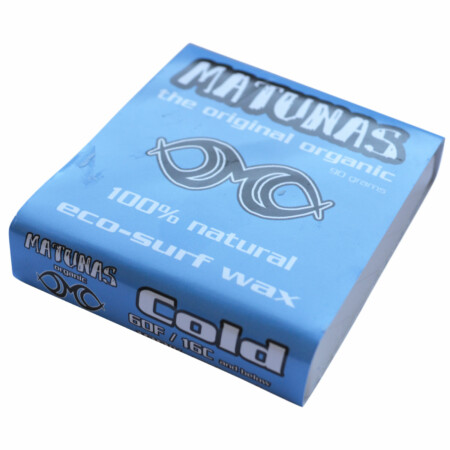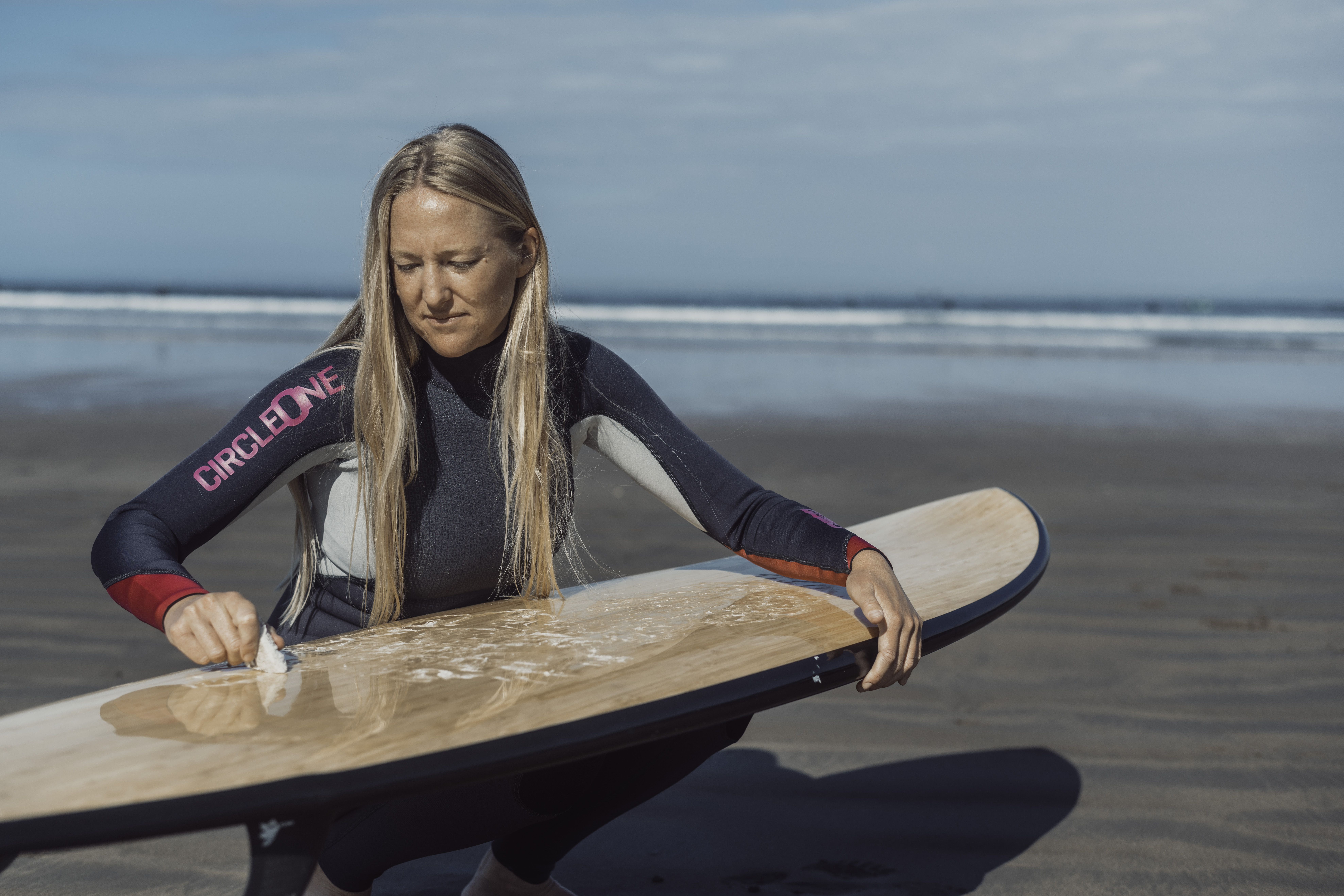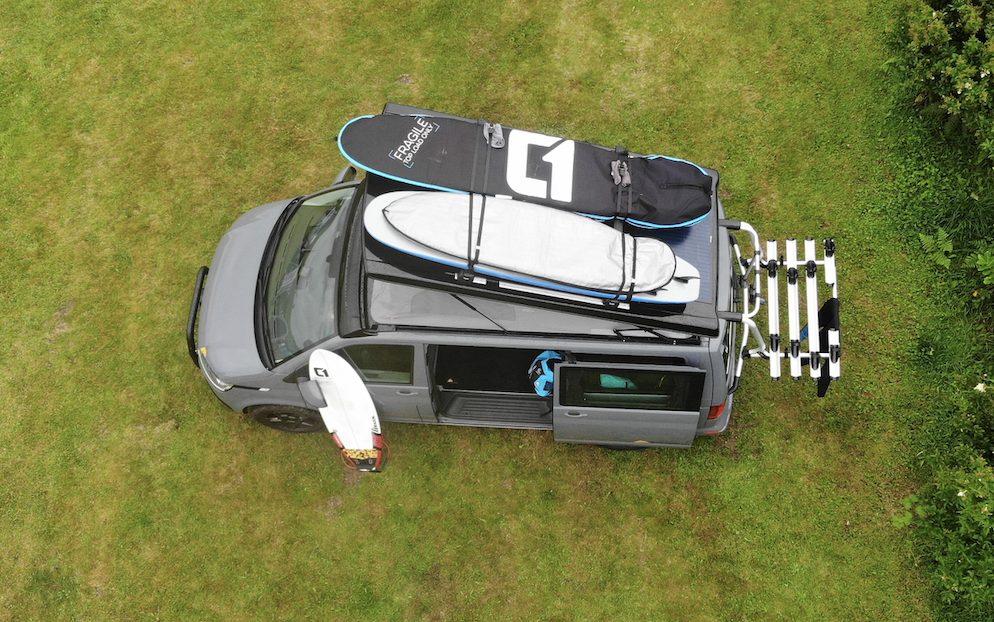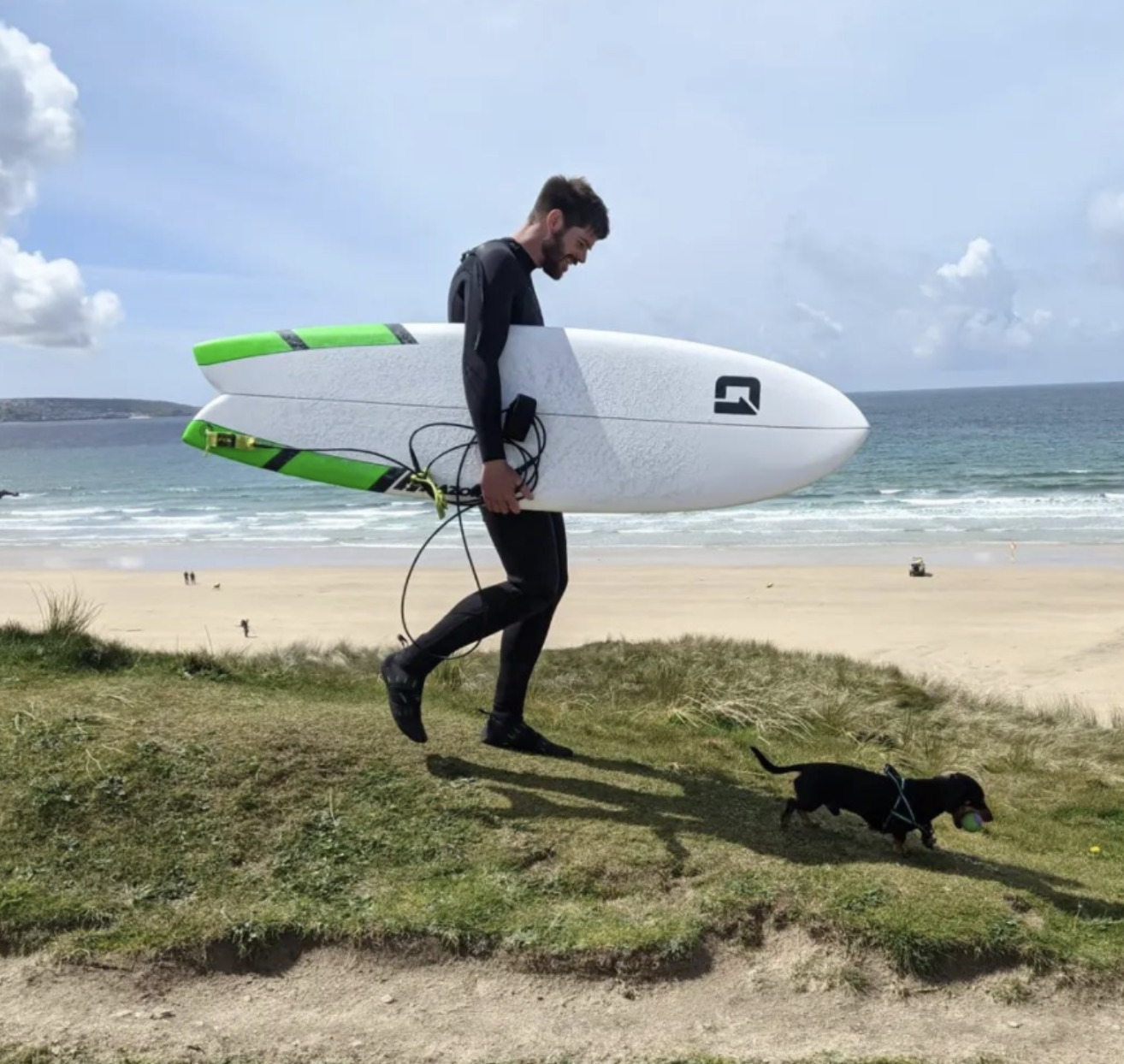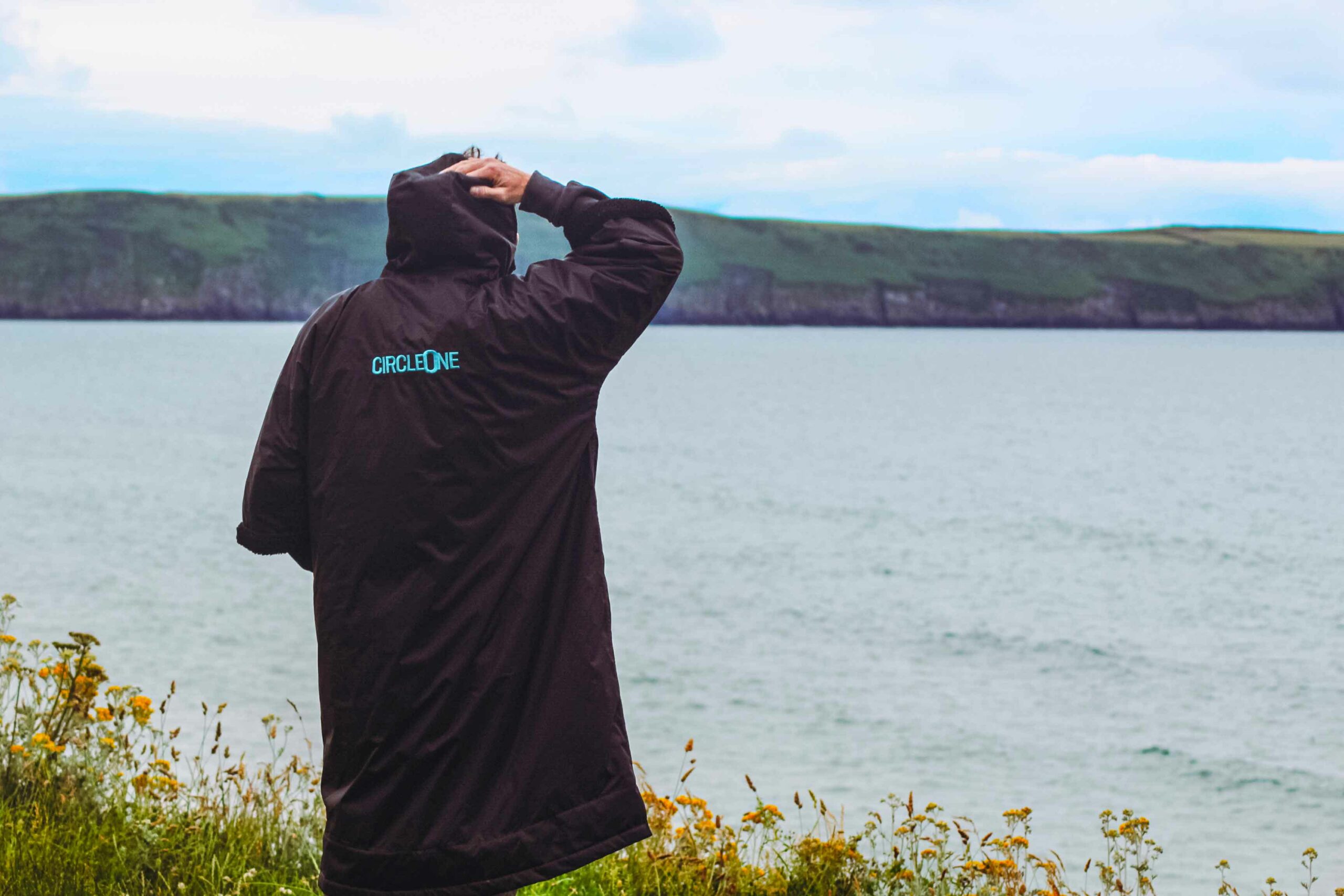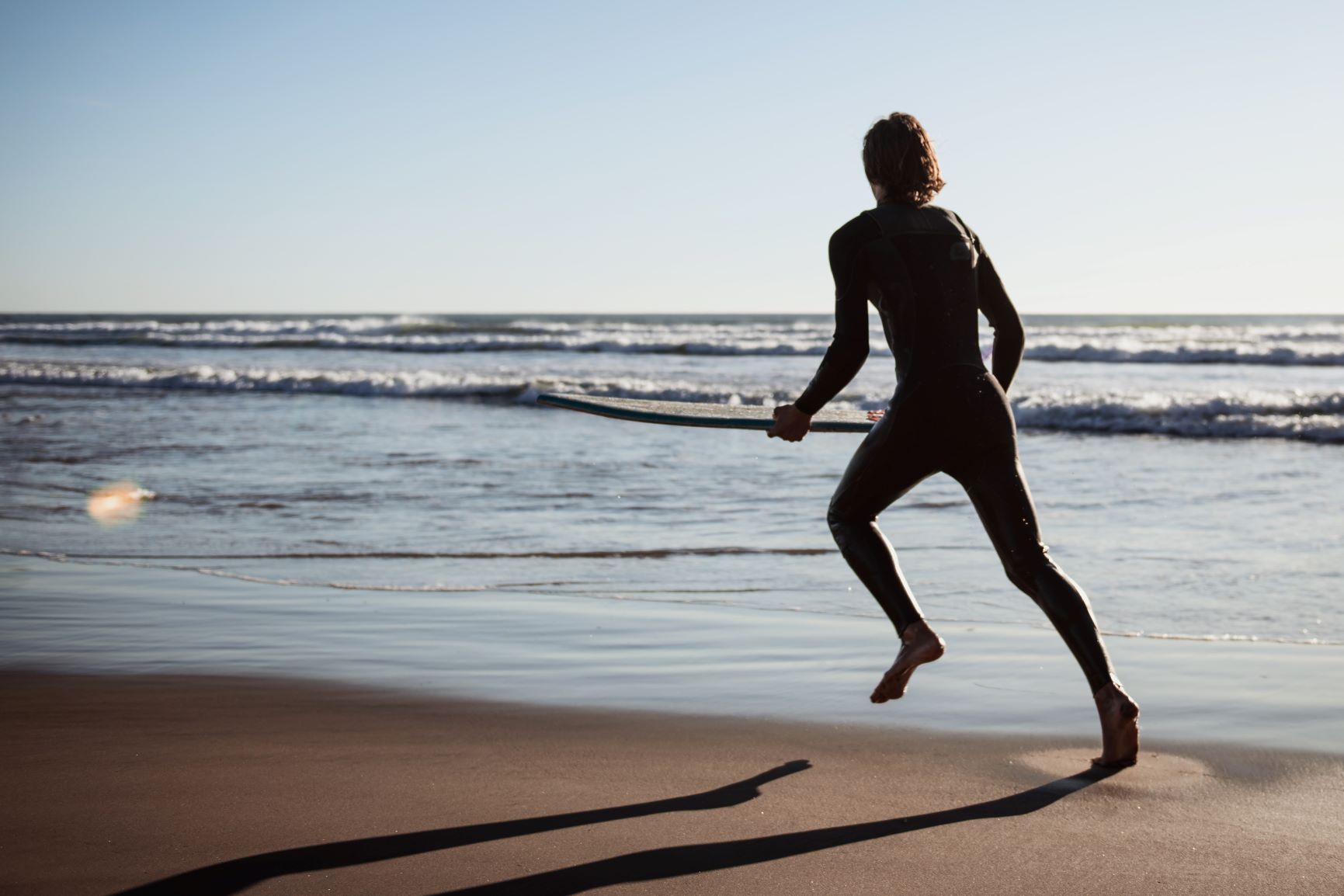Have you got a new surfboard? New to surfing? Or just want to brush up on your skills. One of the most important parts of surfing is the equipment that’s under your feet. In particular how you wax your surfboard. Making sure that your feet or hands don’t slip when you go to stand up. Surfboard wax is designed to be applied to the top of your surfboard and creates sticky bumps on the surface of your board. This gives your feet something to grip on.
WHAT YOU WILL NEED TO WAX YOUR SURFBOARD
You will need a few items to wax your surfboard, which you can order with free postage by clicking on the links below:
- Surf Wax for the correct temperature sea, we love Matunas! Matunas surf wax cares about the environment, it’s non-toxic, biodegradable, with labels made from recycled paper printed with soy based inks. Not only that, it works brilliantly, it’s super sticky and smells great!
- Wax Comb, Wax Cleaner and cloth, (if you have old wax on the surfboard).
1. MAKE SURE YOUR SURFBOARD IS CLEAN
If you are waxing a new surfboard, then skip head to the next step. If you are waxing a used board or you are re-waxing your own surfboard, it is important to first clean the surface grip area. Any old wax on the board will make new wax put on top flake off earlier and create layers of old useless wax which isn’t good for performance or your surfboard.
To clean your surfboard deck, first scrape off all of the wax you can with the straight side of your wax comb, including off the sides (rails) of the surfboard. Be sure to use a wax comb and not just any old tool as you may damage your surfboard. You then want to use a surf wax cleaning product and an old cloth or rag to remove any excess wax which is left over. There is usually a thin layer of wax still remaining that you’ll be able to feel and see if you catch your board in the correct light. Once your board looks glossy and new, and feels smooth you will know you have all of the wax removed and can begin putting on a new coat.
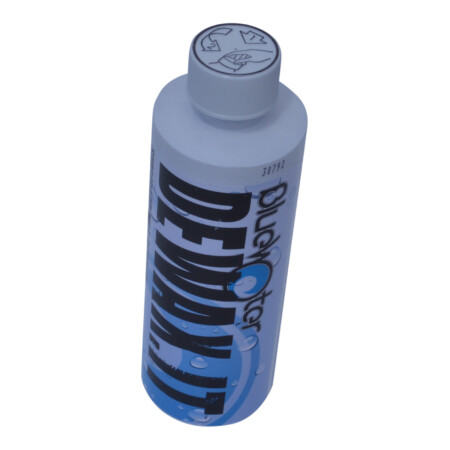
2. APPLY THE SURF WAX
You need to ensure you select the correct temperature wax for the water you will be surfing in. Cold or cool water wax will be suitable for UK / European waters and winter surfing whereas if you are heading somewhere warmer like Indonesia or Sri Lanka you will need tropical wax to account for the higher water temperature. Next hold your bar of surf wax so the outer edge or a corner is touching the board. Using “very light pressure,” rub the wax in small circles, then slowly move along the deck of your surfboard with each new circle. Continue to put wax in circles on the board until you’ve covered the deck area from rail to rail on the areas you’ll place your feet and where you put your hands when you pop-up. For a longboard, this could mean the entire deck. For a shortboard, this could mean covering about two feet on the center of the board as well as the tail. If you’ve got some pressure dings that aren’t filing with wax, use the corner of the bar like a pencil get some wax where it needs to go.

3. AFTER YOUR SURF
Don’t be surprised if quite a bit of the wax flakes off while you surf. The above process should last you a few months before you need to reapply. After a surf, it might be good to get a wax comb and just score some lines in the topcoat wax to break it up a little and create more friction if it has gone a bit flat. This should mean you can surf again on that same coat without reapplying.
4. OUR TOP TIPS
- Remove and reapply your surf wax when it gets dirty! You’ll see visually the surfboard wax will become dirty and in turn become less grippy when you’re in the sea.
- If your wax is looking a little flat, use a wax comb to mark diagonal lines in the existing wax to rough it up a bit and make it sticky again, instead of applying more wax on top which can just make it all messy.
- Make sure you use the right temperature wax for the water you are surfing in.
- Apply a quick coat of wax every time you surf!
- Got to the beach but don’t have wax? If there’s old wax on your board you can rub sand into it to help with traction during that session. (Not recommended for multiple sessions)….
On some minimals, midlengths and shortboards we recommend you opt for a traction pad at the back of your board, a traction pad will help to stop your back foot from sliding off the surfboard whilst turning. As a general rule, surfboards under 7 feet benefit greatly from the addition of a traction pad.




